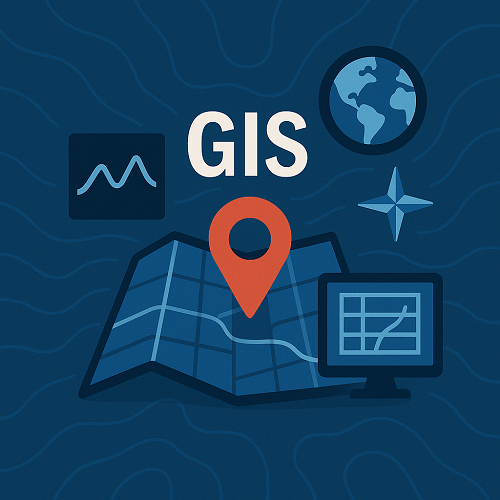TL;DR
- 3D modeling and real-time analytics are redefining how spatial data drives decisions.
- ArcGIS Online introduces automated 3D placement and custom geoprocessing tools.
- The Internet of Things (IoT) integration expands GIS beyond traditional mapping into dynamic smart environments.
- Businesses leverage GIS for predictive modeling, asset tracking, and sustainability insights.
- Collaboration between AI and GIS is scaling rapidly, improving efficiency and data accuracy.
What’s new right now
In 2025, GIS platforms continue to evolve toward real-time geospatial intelligence and immersive visualization. Esri’s ArcGIS Online launched automated 3D model placement capabilities, allowing analysts to visualize urban structures dynamically and simulate environmental changes efficiently. Additionally, custom geoprocessing tools now enable workflow automation directly in cloud-based GIS environments, reducing manual overhead and improving data accuracy.
Another milestone is the integration of IoT sensors with global positioning data streams. Through linked smart devices, GIS now powers smart cities, environmental monitoring, and logistics optimization—all executed in near real-time. Analysts can connect live sensor feeds to dashboards that monitor air quality, traffic flow, and resource use. Such fusion was once theory; today, it’s a practical instrument of sustainable planning.
According to industry reports by Geospatial World, this direction points toward a unified analytical layer where 3D mapping, IoT, and AI intersect to form adaptive spatial systems capable of instant predictive response.
Why it matters
GIS has matured from static map generation to becoming the operational brain behind spatial decision-making. For business leaders, the implications are tangible: location awareness aids market segmentation, supply-chain efficiency, and risk mitigation. For technical teams, these advancements enable powerful automation and data fusion within distributed architectures.
Real-time GIS analysis helps organizations respond proactively to events—weather shifts, infrastructure strain, or consumer demand—his ensures agility and resilience. Meanwhile, 3D modeling enhances urban planning by transforming blueprints into visual simulations that engage citizens and policymakers alike.
Deep Dive: How Technology is Transforming GIS
1. The Leap Toward 3D Intelligence
Traditional GIS relied heavily on 2D data models. With automated 3D model placement, professionals now integrate elevation, building geometry, and environmental context directly into digital scenarios. This leap supports urban design, disaster mapping, and aesthetic visualization.
2. Real-Time Spatial Analytics
The integration of streaming data is revolutionizing operational readiness. When IoT sensors feed into GIS systems, they create live dashboards for traffic prediction, energy management, and supply chain tracking. These real-time geospatial analytical frameworks empower instant decision-making and predictive responses.
3. Smart Cities and IoT Convergence
Smart technology and IoT have expanded the spatial envelope. City administrators use geospatial dashboards to allocate resources dynamically and maintain public services efficiently. In transportation, live geolocation linked to IoT has optimized routes and reduced emissions.
Comparison Table: GIS Evolution Across Dimensions
| Dimension | Traditional GIS | Modern GIS (2025) |
|---|---|---|
| Data Format | Static 2D maps | Dynamic 3D and real-time feeds |
| Processing | Manual geoprocessing | Automated workflows and AI-assisted analysis |
| Accessibility | Desktop-based | Cloud and mobile integrated |
| Application Scope | Cartography and planning | Smart cities, IoT, environmental monitoring |
| Decision Speed | Slow, retrospective | Instant, predictive |
4. Cloud-Based Geoprocessing
Cloud computing enables GIS professionals to scale complex models efficiently. Through custom geoprocessing tools—a feature recently added to ArcGIS Online—users gain flexibility in analyzing terrain, hydrology, or demographics globally without maintaining on-premise infrastructure.
5. Artificial Intelligence and Machine Learning Integration
AI and GIS collaboration has introduced predictive geospatial intelligence. Automated pattern recognition flags anomalies in satellite imagery or sensor data, reducing manual review. When coupled with machine learning, GIS software can anticipate spatial changes—such as flood zones or traffic jams—before they occur.
Mini Case Study: Smart Logistics Optimization
Problem: A global logistics company struggled with inefficiencies in route planning and fuel consumption across a network of 2,000 delivery vehicles.
Approach: The company implemented real-time GIS analytics with IoT-enabled fleet sensors. Through ArcGIS cloud dashboards, managers tracked location data and dynamic road conditions, automatically re-routing vehicles using smart algorithms.
Measurable Outcome: Within six months, delivery efficiency improved by 18%, fuel costs decreased by 22%, and carbon emissions were reduced significantly. GIS proved not only a mapping tool but a driver of sustainable operations and smarter transport.
Implementation Checklist
- Assess spatial data needs and define business outcomes.
- Select cloud-based GIS platforms that support 3D modeling and real-time analysis.
- Integrate IoT sensors or external APIs for dynamic data input.
- Develop automated workflows using custom geoprocessing tools.
- Train staff on AI-assisted spatial analytics and dashboard operations.
- Deploy pilot environments and measure performance metrics.
- Scale deployment organization-wide with continuous optimization.
FAQs
1. What is the main advantage of 3D GIS modeling?
It delivers spatial depth and context, allowing more accurate visualization of environmental and urban variables than flat 2D maps.
2. How does IoT enhance GIS applications?
IoT provides live data flows—such as temperature, motion, or location—to GIS platforms, enabling real-time monitoring and predictive insights.
3. What industries benefit most from modern GIS?
Urban planning, logistics, energy management, environmental monitoring, and agriculture all leverage GIS for precision analytics and optimization.
4. Are cloud GIS tools secure?
Major providers follow stringent encryption and access protocols, ensuring compliance with international standards while maintaining scalability.
5. Can small businesses afford advanced GIS systems?
Yes. Subscription-based cloud models and low-code tools have made GIS more accessible, aligning cost with scale and usage.
6. How does AI improve GIS efficiency?
AI automates pattern detection, anomaly recognition, and predictive modeling, significantly reducing manual analysis time.
Conclusion
In 2025, geospatial technology continues merging dimensions—3D visualization, IoT-driven intelligence, and predictive AI—to deliver comprehensive real-time decision support. Organizations ready to embrace these innovations will see sharper insights, improved sustainability, and a profound competitive edge. To unlock these possibilities, explore our GIS services and take your spatial strategy to the next level.
